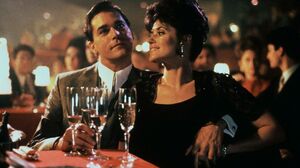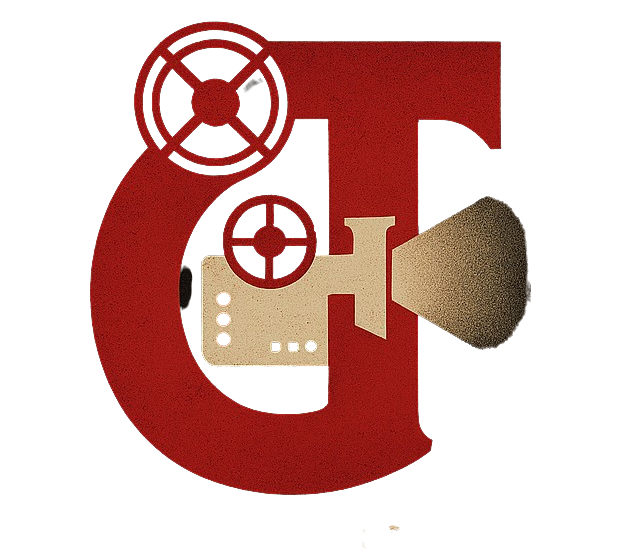Goodfellas

By 1990, American cinema stood at a point of transition. The high-concept blockbuster dominance of the 1980s had not yet fully receded, but the new decade brought a subtle recalibration in tone. Directors were increasingly drawn to darker palettes, personal visions, and genre hybrids that offered emotional texture beneath surface-level thrills. Studio fare still ruled the box office, but the overall mood hinted at unease. A wave of releases emerged before the year’s end – films more concerned with dread, fatalism, and moral ambiguity than with neat resolutions – signaling a shifting sensibility in an industry on the cusp of change.
John McTiernan’s The Hunt for Red October arrived in March with all the trappings of a prestige Cold War thriller: a rogue Soviet captain, a cerebral CIA analyst, and a taut maritime standoff. Released just months after the fall of the Berlin Wall, the film plays like a requiem for its genre, dramatizing the waning moments of a geopolitical standoff that had defined American storytelling for decades. A well-earned box office success and critical favorite, it serves as a final salute to an era defined by espionage and brinksmanship. Its quiet triumphs and focus on procedure over action feel less like victory and more like elegy.
At the other end of the calendar – and tonal spectrum – was Tim Burton’s most intimate work to date. Edward Scissorhands, released in December, is a gothic suburban fable awash in pastel melancholy. Johnny Depp, then more teen heartthrob than auteur darling/ played the titular outsider: an unfinished artificial man with blades for fingers, a figure shaped by Burton’s own sense of suburban alienation. Merging German expressionism with 1950s Americana, Burton crafted a film that defied genre – part romance, part satire, part fairy tale – and proved that mainstream audiences were open to stranger, sadder, more idiosyncratic stories.
Released in September, Joel and Ethan Coen’s Miller’s Crossing explored moral erosion in the Prohibition underworld. The story centers on an Irish consigliere navigating shifting loyalties between rival crime bosses. Arguably the Coen’s most visually refined and narratively uncompromising work, the film unfolds with baroque stylization and labyrinthine plotting. Drawing inspiration from Dashiell Hammett and classical noir, it favors literary detachment over emotional payoff. The brothers’ command of rhythm and atmosphere is undeniable, and while their cool remove maty alienate some, for others it is a masterclass in restraint – eschewing catharsis in favor of silence and ambiguity.
Rob Reiner’s Misery, adapted from Stephen King’s novel, delivered a more visceral kind of tension. Anchored by Kathy Bates Oscar-winning performance as Annie Wilkes – a deranged fan who holds her favorite author hostage – it gave horror a rare taste of awards recognition. James Caan, as the broken and imprisoned writer, imbued what could have been a purely reactive role with complexity and quiet resistance. The film’s power lay in its focus: a cabin, a bed, a typewriter, a bed, and a brutal psychological standoff. Rather than escalate through spectacle, Misery turned claustrophobia into its most potent weapon.
Yet for all the variety 1990 had to offer, one film towered above the rest – critically, culturally, and artistically. Martin Scorsese’s Goodfellas was not only the year’s finest achievement; it remains a masterpiece of modern cinema. The film opens with a freeze frame and a confession – “As far back as I can remember, I always wanted to be a gangster” – that function as both seduction and warning. What follows is a near-operatic account of life inside the American Mafia, seen through the eyes of Henry Hill, a half-Irish, half-Sicilian Brooklyn kid who rises through the ranks before spiraling into ruin.
Flanked by the volatile Tommy DeVito and the calculating Jimmy Conway, Henry’s journey from errand boy to paranoid informant plays out with a grim inevitability. Scorsese, adapting Nicholas Pileggi’s non-fiction book Wiseguy, approaches the material not as a true crime procedural but as a kind of fever dream. The film moves with a musical rhythm rather than a conventional structure, propelled by kinetic tracking shots, abrupt freeze frames, and incisive narrative voiceover. The celebrated entrance to the Copacabana is no mere flourish – it exemplifies how technique becomes storytelling, propelling the set piece forward with a ferocious energy that is relentless.
What separates Goodfellas from its gangster film predecessors is its refusal to romanticize. Where Francis Ford Coppola’s Godfather trilogy offered grandeur, familial codes, and tragic dimension, Scorsese presents chaos, appetite, and vulgarity. His criminals are not mythic figures – they are impulsive, reckless, and petty, driven by ego and insecurity. Violence does not erupt from epic betrayals but from minor slights and wounded pride, a fact the film does not excuse or condemn. When Henry, now in witness protection, complains that he’ll “get to live the rest of his life as a schnook”, the moment lands not as repentance, but as a bitter punchline.
More than three decades later, Goodfellas stands as the definitive statement on the modern American crime saga – a film of unrelenting momentum, formal daring, and moral complexity. It immerses viewers in the seduction of money, power, and excess, only to peel back the façade and reveal the paranoia, betrayal, and ruin beneath. The film’s brilliance lies in its clear-eyed refusal to mythologize or moralize. Scorsese strips the genre of its romantic veneer, exposing the daily rhythms of criminal life with a clarity that is as exhilarating as it is unsparing.
And as a footnote, Warren Beatty’s Dick Tracy arrived in a lackluster summer season with much anticipation but landed as an ambitious visual experiment lacking the emotional gravity of his earlier work. Nearly a decade earlier, Beatty had written, directed, and starred in Reds, a sweeping historical epic chronicling the life of American journalist and activist John Reed, tracing his passionate involvement in socialist politics and the Russian Revolution. Reds is an earnest, intelligent, and deeply felt achievement – a rare Hollywood film treating radical politics, artistic ambition, and romantic idealism with equal seriousness – and remains Beatty’s true legacy as a filmmaker of substance and vision.

